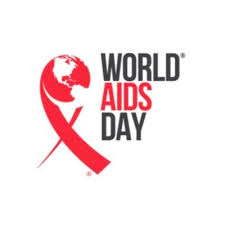December 1 across the world marks the annual Worlds Aids Day. The essence of the celebration is for people worldwide to unite in the fight against HIV, to show support for people living with HIV, and to commemorate those who have died from an AIDS-related illness.
The Worlds Aids day was founded in 1988 and it was the first global health day where individuals, Governmental and Non-governmental organizations gives account of their stewardship so as set a direction for the government so as to put an end the deadly disease called “HIV/AIDS” ,while the day also focuses on sensitization campaigns on HIV/AIDS.
The sensitization shouldn’t only ends at telling people that AIDS is real but to also inform them about various safe options during sexual intercourse with different partners. It doesn’t also ends there but condom usage among couples also ends prevent unwanted pregnancy.

The cost of getting a condom isn’t compared to the cost of prophylaxes, abortion and endangering other fellow human beings which are issues centrifugal to the annual Worlds Aids day.
The wave of COVID led to many nations of the world locking down their economy and this period, the urge for sex further sky rocketed compared to other years which informed the theme, United to End AIDS in the midst of COVID-19.
Over 103,800 people are living with HIV in the UK. Globally, there are an estimated 38 million people who have the virus. Despite the virus only being identified in 1984, more than 35 million people have died of HIV or AIDS, making it one of the most destructive pandemics in history.
In Nigeria, HIV/AIDS has been a concern since 2000s, when an estimated seven million people had HIV/AIDS. In 2008, the HIV prevalence rate among adults aged between 15 and 49 was 3.9 percent; in 2018 the rate among adults aged between 15 and 65 was 1.5 percent.
Research has it till that Nigeria has the second largest HIV epidemic in the world. Although HIV prevalence among adults is much less (1.3%) than other sub-Saharan African countries such as South Africa was estimated at 19% while Zambia was 11.5% , the size of Nigeria’s population means 1.8 million people were living with HIV in 2019. Recent drops in prevalence estimates for the country has been attributed to better surveillance.
Nevertheless, UNAIDS estimates that around two-thirds of new HIV infections in West and Central Africa in 2019 occur in Nigeria. South Africa and Uganda are two countries that accounts for around half of all new HIV infections in sub-Saharan Africa every year. This is despite achieving a 13% reduction in new infections between 2010 and 2019.
Unprotected heterosexual sex accounts for 80% of new HIV infections in Nigeria, with the majority of remaining HIV infections occurring in key affected populations such as sex workers.
As Nigeria and the rest of the world continues to fight the HIV pandemic, it is advised that people continues to take precautionary measures against contracting the deadly diseases while options of condom and other injections should be taken serious to prevent an unfortunate circumstances.